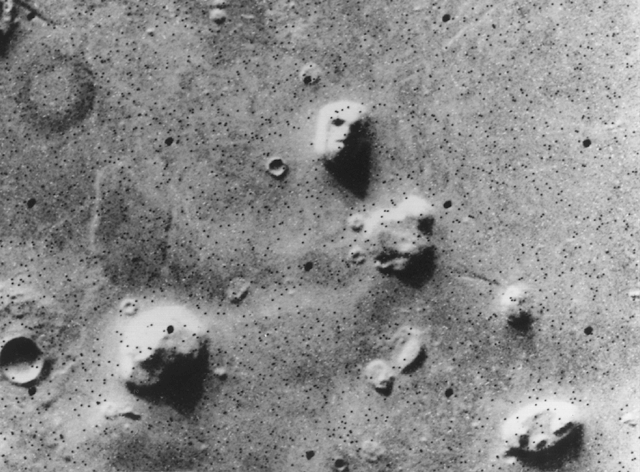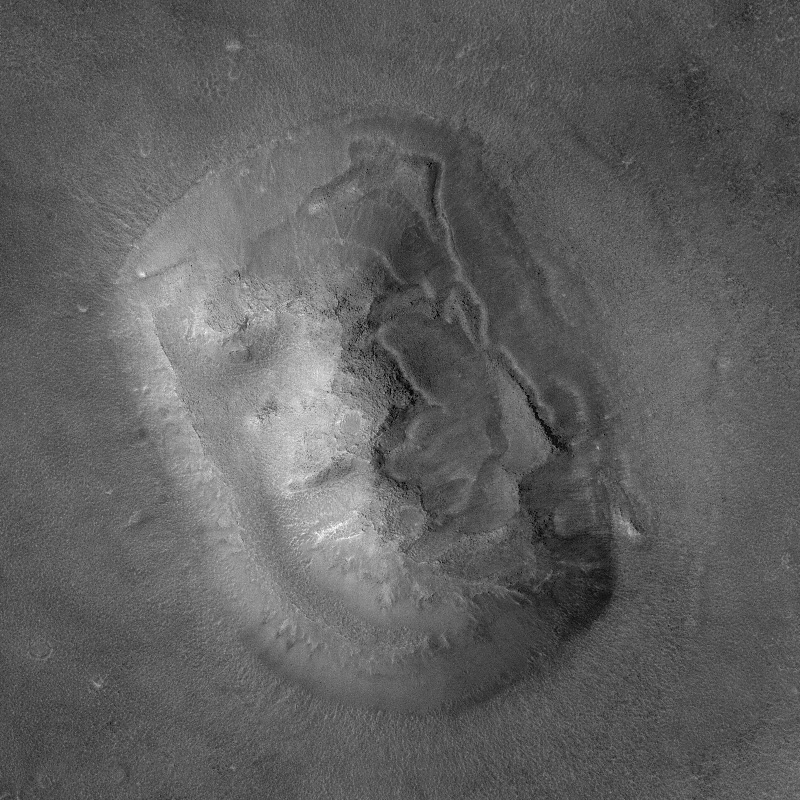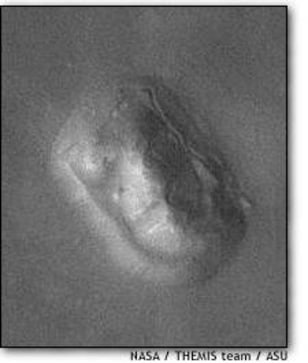However, the first howler (and it was a DOOZY) came, not from a know-nothing like Noory or Wilcock, or even Hatcher Childress, but apparently from the lips of another Moon-book author, Rick Stroud of The Book of the Moon. It was this:
06:01note 1 "The reason the Moon has phases is that the Earth blocks the light of the Sun as the Moon moves around the Earth."
I wrote "apparently" back there because they cut away to animation during this statement, so it's possible that some bozo of an editor made Stroud seem to say what he never actually said. The real reason the Moon has phases, of course, is that the angle formed by the Earth-Moon-Sun system varies from 0° to 360° over the month. The reason we don't see eclipses every month is that the plane of the Moon's orbit only occasionally aligns with the ecliptic. I think most 6th grade school students know that. Considering the number of times this show would have been reviewed -- first by the editor and director, then by editor, director and producer, then a full-dress affair crowded with execs and hangers-on -- it's totally gob-smacking that nobody said "Hang on a minute, chaps...."
Around the 08:40 mark we got into the classic falsehood that Armstrong and Aldrin saw flying saucers and were "warned off." I wrote about this earlier in July. Heaven be praised, they didn't actually use that ridiculous pseudo-quote "Their ships were far superior to ours" -- but Michael Salla spoke of a mysterious two-minute gap in the air-to-ground dialog on Apollo 11, and the fantasist David Hatcher Childress said "the astronauts talked about seeing extraterrestrial objects on the Moon." No they didn't, David old son. It's in your imagination. Then it was over to Mike Bara again:
09:27 "Now the truth is that each of the astronauts had a separate medical channel. That channel was not public and it could have been very easily used to communicate information that you didn't want to be heard by the general public transmissions."
That's not the truth, Mike -- it's the UNtruth. There was no such thing as a "separate medical channel." The astronauts could request private consultations but those were fed over the exact same S-band link as the rest of the air-to-ground. The difference is that they were not released to the Press. James Oberg has covered this very well, citingnote 2 his interview with Terry White and Charles Redmond in 1980:
White: Occasionally we would configure for private medical or family conversations. There was no special frequency or code, we'd just have the rest of the consoles get disconnected at the communications center.
Redmond: The medical conversations were not recorded, and were not released -- although we would summarize them in press conferences. There's something in the Hippocratic Oath about a doctor having to maintain confidentiality with his patients.
Question: How often did this happen?
Redmond: During Apollo, quite infrequently. During Skylab, we'd have such a talk maybe every three days or so.
Question: So there was no special code or secret channel?
Redmond: No, we used our ordinary channels, but the crew would request the doctor only -- the "flight surgeon" -- and the rest of us would disconnect.
White: Or else the crew could talk privately to their families in a back room down the hall from the control room.
Question: Outside of these confidential talks with doctors, wives, and children, were there any other conversations not publicly available?
Redmond: No, I don't think so, I don't see how they could have managed it.
What if...?
Shortly there follows a fairly classy two- or three-minute segment explaining how very different Earth would be without the Moon -- without the ocean tides it creates, and without its braking effect on the Earth's rotation. Perhaps, the script muses, life itself would never have arisen if it had not been for the Moon. For once they got something right.
Then it's back to the familiar misinfo, as Bara says it's very mysterious that almost all craters on the Moon are the same depth (they aren't,) and Giorgio Tsoukalos says it "doesn't make sense" that the floors of craters are concave [See Update] (yes, Giorgio, of course it does.) This is all leading up to the hollow Moon theory, which this blog covered in January 2015. Hilariously inappropriate words like "an alien spaceship," "a thriving extraterrestrial community" trigger lavish and totally imaginary animations of the Moon inhabited by aliens. George Noory wraps up this segment by calling it a "Death Star." The whole segment is an exercise in simply "making things up."
credit: Prometheus Entertainment
I ask the question I always ask faced with these fantasies -- "Where are the solar arrays the aliens would undoubtedly need as an energy source to power their Death Star?"
1202 alarm
Having flogged that horse to death, the script now turns to the question of observed artificial structures on the Moon. Richard Hoagland must have had a fit if he watched this, because they used none of his material about glass skyscrapers and fairy castles at all. Instead, they focused on some "spires" in the Sea of Tranquility that they say were captured by Lunar Orbiter 2 in 1966 (but see comments from OneBigMonkey below -- the image is not from Orbiter 2 and it's not in the Sea of Tranquility but 1400 km away near Tycho.)
credit: Prometheus Entertainment
Naturally, nobody thought of examining the far better and more modern images from Lunar Reconnaissance Orbiter to check these things -- or perhaps they thought of it but didn't want to spoil a good yarn. It gave Mike Bara a chance to botch a famous story.
34:11 "On Apollo 11, when the astronauts were descending to the lunar surface, they got this very strange computer alarm ..[SOF].. the famous 1202 computer alarm that basically nobody knew what it was. What it came out to was that the computer itself was overwhelmed with information, because Buzz Aldrin, the Lunar Module Pilot, had turned on the radars on the lunar lander. They had two radars -- they had a side-looking radar and they had a docking radar. [So] you had one pointed down, and one pointed to the side. Now, if there's nothing on the surface of the Moon, if there are no artificial structures , if there are no spires sticking 10-20 storeys up in the sky, why would you turn on the side radar? There's no reason to but Aldrin did it, and I think it's because he knew, and NASA knew, that there was some danger of running into these things."note 3
He gets the story partly right. The two radar systems were in fact the rendezvous radar and the landing radar. Space mythology often holds that Aldrin left the rendezvous radar on by mistake, but in fact it was more subtle than that. The rendezvous radar was on as planned, in case of a landing abort, but it should have been configured so that the computer didn't waste time interrogating it for data that obviously wasn't there. Peter Adler tells the tale here, and a highly technical explanation is here. Nothing to do with "spires" (which are actually large rocks in crater Tycho similar to the Blair cuspids -- thank you OneBigMonkey -- a long way from the Apollo 11 site.) As for "nobody knew what it was" -- the whole point is that they did know what it was and correctly recommended that the landing could go ahead.
In the course of wrapping this up they come up with the childish fallacy "the dark side of the Moon" and the utter nonsense that Wernher Von Braun was the Head of NASA in the sixties (his highest position was actually Deputy Associate Administrator for Planning.) All in all, this was a classic comedy of errors, on a par with "Viking 1 Landed at Cydonia" (S6E16) and "The only launch pad at White Sands missile range is pad 33" (S4E5). But of course, we've long since ceased to expect anything better from this ill-informed parade of popinjays.
Update:
I misheard. Tsoukalos said it doesn't make sense that crater floors are conVEX, not conCAVE. It's true that a few craters have this property -- a prime example is Hesiodus A. But it does make sense -- it happens when a deep impact crater is invaded with upwelling lava.
=====================/ \======================
[1] All quoted times are for the 42-minute version, with commercials excised.
[2] From Oberg's book UFOs and Outer Space Mysteries: A Sympathetic Skeptic's Report (1982)
[3] Considering that the whole purpose of the Lunar Orbiter program was to scout landing sites, and that the requirements for the first landing were "safety safety safety," it's preposterous to suggest that they picked a site where there was a known hazard. Add that to the fact that the cuspids were miles away, and weren't spires or obelisks anyway, and Mike Bara stands guilty of yet another colossal fabrication.







